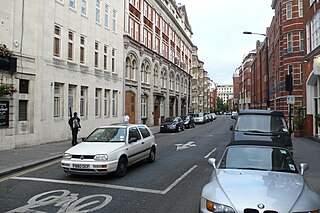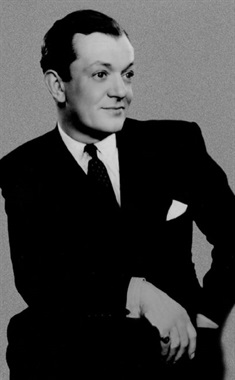
The London Borough of Haringey is a London borough in north London, classified by some definitions as part of Inner London, and by others as part of Outer London. It was created in 1965 by the amalgamation of three former boroughs. It shares borders with six other London boroughs. Clockwise from the north, they are: Enfield, Waltham Forest, Hackney, Islington, Camden, and Barnet.

Drury Lane is a street on the eastern boundary of the Covent Garden area of London, running between Aldwych and High Holborn. The northern part is in the borough of Camden and the southern part in the City of Westminster. Drury Lane is part of London's West End Theatreland.

Tottenham Court Road is a major road in Central London, almost entirely within the London Borough of Camden.

Crouch End is an area of North London, approximately five miles (8 km) from the City of London in the western half of the borough of Haringey. It is within the Hornsey postal district (N8). It has been described by the BBC as one of "a new breed of urban villages" in London. In 2023, it was voted the best place to live in London by the Sunday Times, saying "A creative edge and friendly neighbours give this lofty northern enclave social capital in the capital".

The Hippodrome is a building on the corner of Cranbourn Street and Charing Cross Road in the City of Westminster, London. The name was used for many different theatres and music halls, of which the London Hippodrome is one of only a few survivors. Hippodrome is an archaic word referring to places that host horse races and other forms of equestrian entertainment.

Hornsey and Wood Green was a constituency in Greater London created in 1983 and represented in the House of Commons of the UK Parliament from 2015 until its abolition for the 2024 general election by Catherine West, of the Labour Party.

Charles Robert William Howes was a British entertainer who was a leading musical comedy performer in London's West End theatres in the 1930s and 1940s.

The Jubilee Walkway is an official walking route in London. It was originally opened as the Silver Jubilee Walkway to commemorate Queen Elizabeth II's accession; the Queen herself opened it on 9 June 1977 during her silver jubilee celebrations. The intention was to connect many of London's major tourist attractions and it is now one of seven such walks within the Mayor of London's strategic walking routes. Its length is 15 miles.

The Golders Green Hippodrome was built in 1913 by Bertie Crewe as a 3,000-seat music hall, to serve North London and the new London Underground Northern line expansion into Golders Green in the London Borough of Barnet, London, England.

The Princess's Theatre or Princess Theatre was a theatre in Oxford Street, London. The building opened in 1828 as the "Queen's Bazaar" and housed a diorama by Clarkson Stanfield and David Roberts. It was converted into a theatre and opened in 1836 as the Princess's Theatre, named for then Princess Victoria before her accession as queen. After an unsuccessful series of promenade concerts, alterations were made on the interior, and the theatre was reopened on 26 December 1842 with Vincenzo Bellini's opera La sonnambula. The theatre, by now under the management of John Medex Maddox, presented operas and other entertainments, such as General Tom Thumb.

The A103 is an A road in London, England.
The Open Space Theatre was created by Charles Marowitz and Thelma Holt in 1968. It began in a basement on Tottenham Court Road in London, then transferred to an art deco post office on the Euston Road in 1976. Thelma attracted a team of volunteer architects and workers to build the theatre. And its first production was Charles Marowitz' adaptation of the Merchant of Venice starring Vladek Sheybal. Natasha Pyne played Ophelia in a Charles Marowitz's adaptation of Shakespeare's 'Hamlet' at the Open Space Theatre at Tottenham Court Road in July 1969. The company operated until around 1980.

Pottery Lane is a street in Notting Hill, west London. Today it forms part of one of London's most fashionable and expensive neighbourhoods, but in the mid-19th century it lay at the heart of a wretched and notorious slum known as the "Potteries and the Piggeries". The slum came to the attention of Londoners with the building of the Hippodrome in 1837 by entrepreneur John Whyte. Unfortunately for Whyte a public right of way existed over his land and "dirty and dissolute vagabonds" from the nearby slum invaded his racecourse, adding to his financial difficulties and, in part, leading to the closure of his venture in 1842. Pottery Lane gradually improved in the late 20th century along with the rest of the Notting Hill area, and today the houses there fetch multi-million pound prices. Just one of the original brick kilns still survives; it is located in Walmer Road, just north of Pottery Lane, and bears a commemorative plaque placed there by the Royal Borough of Kensington and Chelsea.

Lordship Recreation Ground is a public park in Tottenham, London Borough of Haringey. It is over 20 hectares in size. Access is from Lordship Lane and from opposite Downhills Park in Downhills Park Road. It stretches approximately 750m north-south. The Moselle Brook runs through the park from west to east and the park also includes a small lake.

The Queens is a grade II* listed public house and former hotel on the corner of Elder Avenue and Tottenham Lane in Crouch End, north London.

Maiden Lane is a street in Covent Garden, London, that runs from Bedford Street in the west to Southampton Street in the east. The painter J. M. W. Turner was born in the street in 1775.

Tottenham Lane is a street in Crouch End and Hornsey in the London Borough of Haringey. The street runs from the centre of Crouch End at the clock tower, north to the junction of the High Street and Turnpike Lane (A504).

James Edmondson, known as "the Highbury builder", was an English property developer who was responsible for the creation of the Sotheby Road area in Highbury and the development of several notable shopping parades in suburban north London. With William J. Collins, he was instrumental in the creation of modern Muswell Hill.

Cranbourn Street is a street in Central London. It connects Leicester Square to Long Acre via Charing Cross Road.

Catherine Street, originally known as Brydges Street, is a street in the City of Westminster, London. It runs from Russell Street in the north to Aldwych in the south. It is crossed midway by Tavistock Street and joined on the western side near Aldwych by the eastern end of Exeter Street.



















